Para Commando Belgium
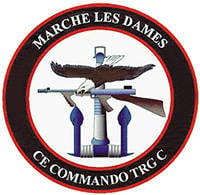 The Belgian special operations forces are represented by a paratroop commando team (para-commando) and a special intelligence unit. They have a high level of training of personnel, the same high mobility, firepower and glorious history. The Belgian para-commandos for the tasks to be solved are comparable to the American Ranger Regiment, but their training is somewhat more complicated than that of the Rangers.
The Belgian special operations forces are represented by a paratroop commando team (para-commando) and a special intelligence unit. They have a high level of training of personnel, the same high mobility, firepower and glorious history. The Belgian para-commandos for the tasks to be solved are comparable to the American Ranger Regiment, but their training is somewhat more complicated than that of the Rangers.Skydivers
The first company of Belgian paratroopers was set up in the UK on May 8 of the year 1942 from volunteers gathered from around the world. After two years of intensive training under the command of captain Blondil, the company was recognized as an operational unit and was included in the famous SAS Brigade as a “Belgian squadron”. In July, 1944, the groups of the first Belgian squadron were parachuted in France to gather intelligence and sabotage tasks. Similar landings were thrown into areas of the French Ardennes, Beauvais (France), Gedinn, Hoge Venen, Limburg (Belgium) and in the Netherlands near Friesland. They acted in the interests of the Allied forces advancing in the north. During the von Rundstedt offensive in the Ardennes (Belgium), the company was regrouped and equipped with armored jeeps. As a reconnaissance squadron, she performed security tasks and conducted reconnaissance in the interests of the 6 British Parachute Division. By the beginning of April 1945, this unit had reached the size and status of a regiment, which consisted of three reconnaissance units stationed in the north of Holland and in Germany. After the capitulation of 8 on May 1945, they participated in counterintelligence activities in Germany and Denmark. The Belgian CAC regiment is the first allied unit to enter Belgium, and the only Belgian unit to take part in hostilities from July 1944 to May 1945. The parachute regiment SAS in July 1945 was deployed in Tervuren, and here immediately began combat training. In August, the SAS training center in Westmalla was established on 1945. 31 March 1946, he moved to Pulsjur.
The regiment was awarded the standard by the Declaration of the Regent of 26 August 1946. The standard is currently stored in the 1 parachute battalion. On the cloth are embroidered the names of the areas in which the special forces fought: Normandy, Belgium, Ardennes, Emden, Oldenburg.
In 1953, the battalion moved to Diest, which is still its base. The fighters wear red berets as a headdress, as well as the CAC emblem, which they inherited from their predecessors during the Second World War.
Commando
Unlike paratroopers, the formation of a commando unit began somewhat later - in September 1942. The first volunteers began to arrive in Scotland in the town of Aknakarri. Upon completion of the training, they formed a commando unit. It also includes volunteers from other occupied countries: France, Holland and Poland. A year later, the subunit on ships was delivered to North Africa, but immediately upon arrival it was transferred to Italy, where it became part of the 8 Army. In January, 1944, the unit was attached to the US 5 Army and took part in the hostilities near the Garyano River. For operations in the period of 1943 – 1944, the subdivision was included in the list of distinguished ones and received the right to inscribe on its standard the name of the country where it fought bravely: “ITALY”. In March 1944, the Belgian unit became part of the 4 British commando brigade, which at the time was based in Yugoslavia on the island of Vis, used as a base by Tito guerrillas. From here, commandos made raids against German ships in the Adriatic. During these operations, the division again fell into the list of distinguished and received the right to inscribe on its standard “YUGOSLAVIA”. In May, the 1944 of the year returned to England, where it was replenished with personnel and received additional training.
In November 1944, the Belgian commandos took part in the landing on the island of Volcheren. This island, bristling with field implements, was a real fortress that blocked navigation on the Schild River and made it impossible for the Allies to use the port of Antwerp. For this operation, the commandos again fell into the list of distinguished themselves at Volchereni. So on the standard appeared the third name "WALCHEREN". 15 May 1944, the unit received the official status of the commando regiment.
In 1952, all Belgian parachute units and commando units were consolidated into a para-commando regiment.
In 1955, in the Belgian Congo, the 3 10th Paratrooper Battalion was formed. To form a new battalion, divisions of the 1 th battalion of paratroopers and the 2 th battalion of commandos were used. The Belgian Paratroopers' 3 Battalion follows the traditions of the volunteer corps operating in Korea and often on the lists of distinguished men. In 1960, during the War of Independence in the Belgian Congo, the 3 Battalion of paratroopers participated in airborne operations in Kikwit, Indu and Manono, and also raided Dokando and Kosongo.
In 1962, the battalion left its base in Burundi and was transferred to Belgium, where it settled in the new Lombarsijde barracks. In 1963, the city of Kortrijk assumed the status of a base for the battalion. In 1977, the next move took place, this time to Kempen - a forest area near the Danish border. The former British ammunition depot near the village of Tilen became a new home for the special forces. In 1983, the battalion was honored to receive Prince of Belgium Philip as commander of one of the platoons. The barracks, where the battalion is now located, are named after Captain Pierre Gailli, who died in battle during the Korean War in 1953. The battalion’s standard contains the places where its progenitor, the volunteer corps, distinguished itself in battles in Korea: IMJIN, HAKTANG-NI, CHATKOL, KOREA, Campagne de Corе 1951 – 1953.
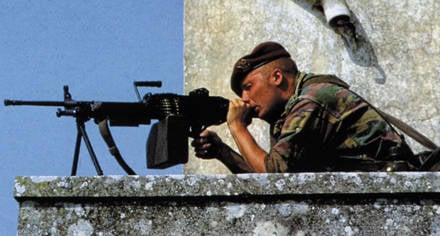
Participation of the para-commando regiment in the fighting
In 1960, the Congo 1 battalion of paratroopers liberated European settlers in the besieged Luluaburg. He also conducted operations in Elizabethville and Jadotwil. In 1961 and 1962 in Rwanda and in Burundi, he was involved in restoring public order.
In November, the 1964 Battalion conducted a humanitarian operation in Congo in the Congo, during which hundreds of hostages in Stanleyville and Paulus were released. In less than 1 hours, the battalion dropped two parachute parachutes. In these operations, which were called "Red Dragon" and "Black Dragon", the units of the 48-th battalion of paratroopers and the 3-th company of the 12-th battalion of commandos also took part.
In May 1978, the 1th Paratroopers Battalion was deployed to Zaire. In conjunction with half of the commando battalion 2 and the 3 battalion of paratroopers, he conducted Operation Red Bean and stormed Kolwezi, from which foreigners were subsequently evacuated around 2000.
In 1979, the 2 Battalion was sent to Zaire to assist the units of the Zaire army.
In 1990, the 2 Battalion of the Commando, along with the reconnaissance squadron, 22 Company and 15 Company of the 3 Parachute Battalion, participated in the humanitarian operation Green Bean in Rwanda.
In September, 1991, during Operation Blue Ray, which was conducted by the para-commando regiment in Zaire, the 1 and 2 battalions ensured the evacuation of Europeans from Kolwezi, Lubumbashi, Likasi and Kinshasa. In the same year, the 3 Battalion company headquarters, reinforced by the 17 company, were sent to Iran to participate in Operation Blue Lodge to support Kurdish rebels.
Creation of a brigade
During this period, an anti-tank company, a field artillery battery and a reconnaissance squadron were assigned to the regiment for reinforcement. In November 1991, the para-commando regiment, after giving it support and support units, became a para-commando brigade. One of the units included in the new brigade was the 3 th reconnaissance parachute regiment, which had a long and glorious history.
The progenitor of the 3 reconnaissance parachute regiment is the Belgian Carabinieri regiment, which was established by royal decree of the 7 September 1814, and was the forerunner of the 3 Uhlan regiment. 5 May 1816, the Minister of War established a single numbering system for cavalry regiments, as a result of which the regiment became known as the Belgian Carabinieri regiment No. 2 and participated in the battle of Waterloo 18 in June 1815 of the year. In 1863, as a result of the reorganization of the cavalry, the regiment was transformed into the 3 st Uhlan regiment.
The regiment took part in the First World War 1914 – 1918.
In 1935, a decision was made to cavalry motorization, and in 1938, the 3 Uhlan regiment received motorcycles and small tracked vehicles. During the Second World War, the regiment also distinguished itself on various battlefields.
In 1950, the regiment became tank. During the Cold War, until the fall of the Berlin Wall, it was repeatedly reorganized and rearmament. In 1978, the regiment came under the command of reconnaissance troops and moved to Speech.
1 November 1991, the para-commando regiment was given brigade status. 30 April 1992, the 3 Uhlan regiment was disbanded. His name, standard and tradition subsequently took para-commando reconnaissance squadron.
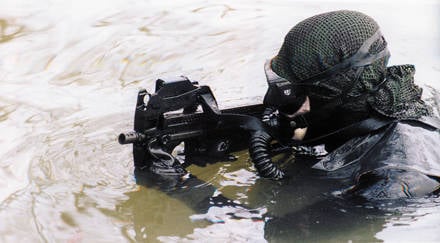
Combat use in the brigade
In 1992, the 1 Battalion of Paratroopers, together with the Americans, took part in a peace enforcement operation in Somalia called “Revived Hope”. In January 1993, the 3th Paratrooper Battalion returned to Africa for Operation Sunny Winter in the Congo capital Brazzaville. From August to December 1993, the 2 and 3 battalions participated in the UNOSOM peacekeeping operation in Somalia.
From 1993 to 1994 for the year in Rwanda, the 1 Battalion carried out the UNAMIR peacekeeping operation within the framework of a UN mission. One of the tasks was called the “Clean Corridor”, during which the battalion had to ensure traffic safety along the road leading from the north, so that the battalion of the patriotic front of Rwanda could go to Kigali for negotiations.
In April, 1994, the 2 Battalion Commandos, together with the 3 Battalion, the Para Commandos participated in Operation Silver Back, during which it helped to evacuate the citizens of Belgium and other countries.
24 March 1997 of the Congo The 1th Paratrooper Battalion together with the 2th Commando Battalion and the 22 Company of the 3 Battalion, reinforced by the 15 Company, participated in the Green Stream mission "). The battalion was transferred to Brazzaville and Pointe-Noire in order to prepare for the evacuation of Europeans from Zaire
Brigade units also participated in a peacekeeping operation in Bosnia.
Brigade organization
Currently, the para-commando brigade is deployed throughout Belgium and consists of three para-commando infantry battalions, the 3 th parachute regiment of the lancers, field artillery batteries, the 35 th engineering company, the 14 th rear squadron and the 210 medical company.
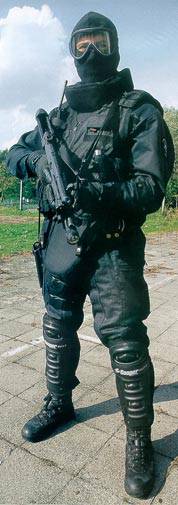 1 th paratrooper battalion
1 th paratrooper battalionThe 1 Battalion is located in Diest, it is staffed with volunteers and employs about 500 people. All personnel are qualified paratroopers, commandos.
The battalion consists of a staff company and four infantry companies. In turn, the staff company consists of a company management, a support platoon, a service platoon, a medical support section, a mortar platoon, which, depending on the tasks, may have six 81-mm mortars or six 105-mm mortars.
In this case, an infantry company consists of a company management and two infantry platoons. The third infantry platoon is deployed in the event of a military threat or the beginning of the war. The platoon consists of two infantry sections and an anti-tank unit, consisting of two calculations of the Milan "ATGM."
The battalion falls part of the tasks facing the brigade. In particular, the battalion is part of the allied command of the mobile forces in Europe as part of an immediate response. As part of the multinational reserve center is a rapid response unit. The battalion is part of the Belgian intervention forces.
To solve these problems, the 1 th battalion of paratroopers can participate in airborne, airmobile, or regular infantry operations. In addition, the battalion may be involved in rescue operations and in peacekeeping operations.
Each battalion fighter must undergo an annual medical examination and pass fitness tests for fitness.
To confirm their qualifications for paratroopers, commandos, each member of the battalion must complete at least four parachute jumps.
Due to the large number of tasks that can be assigned to the battalion, its training is characterized by diversity. Every year, the battalion is sent to exercises near the city of Otterburn (Great Britain) to consolidate and develop the level of infantry tactics and the procedure for the use of equipment. Throughout the year, each company develops a training program for commandos and paratroopers, both independently and as part of a battalion, taking part in joint alpine training sessions. Several times a year, each company has the opportunity to receive training in an exchange program with foreign units both in Belgium and abroad.
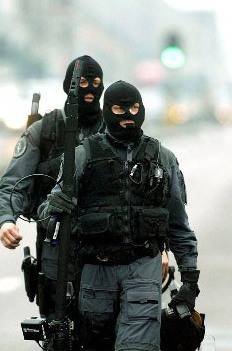 2 commando battalion
2 commando battalionThe standard structure of the battalion is similar to the structure of parachute battalions. There is some difference in the training of personnel.
After a period of intense physical and psychological training at the Commando Training Center on Marsh-le-Dame, those who successfully completed the training course have the right to receive a certificate allowing to carry the commando emblem - a dagger embroidered on a piece of black fabric. This emblem is worn on the right sleeve of the work uniform, as well as on the right sleeve of the uniform. Each intern must make eight parachute jumps, after which he is assigned a special badge with a picture of wings. These jumps should include a jump at night, jumps from a stratostat, from a C-130 plane and jumps with full combat equipment.
Currently, the 2 commando battalion is deployed in Flavain.
In the armed forces of Belgium in the early nineties, a new parachute unit of special operations was formed, combining the capabilities of depth reconnaissance units and track rangers. It consists of eighty soldiers and is deployed in Flavain and Nameena. The unit was deployed during Operation Revival of Hope in Somalia and has been successfully operating for 16 years.
Formally, the special forces unit is part of the 2 Battalion and submits to the battalion commander in matters of internal order and service, but, performing tasks, acts, as a rule, independently. Training, equipment and appointment of special forces differ from the usual commandos. The unit combines the tasks of intelligence trackers and deep intelligence. The trackers were a unit that was part of the commando battalion 2, therefore the battalion 2 was reconnaissance. Pathfinders usually operate in groups of six, and their tasks are similar to those of pathfinders or FTA units of the US Army. The Deep Intelligence Unit operates in fours, like the British SED, and resembles it also on a number of other grounds.
3 th paratrooper battalion
The 3 5th Paratrooper Battalion consists of a headquarters company and three paratroopers. A staff company consists of a company headquarters, a communications platoon, a mortar platoon, a support platoon, a service platoon and a medical section. Each company of paratroopers includes a company management, support sections and three paratrooper platoons. The platoon of parachutists, in turn, consists of two infantry sections and an anti-tank section.
Each company has in its staff automotive and other equipment: an ILTIS jeep, UNIMOG light trucks, MAN trucks, ten-seater and three-seat inflatable boats. For the performance of the tasks assigned to the armament of the company, there is a variety of weapons: the ATGM "Milan", heavy 12,7-mm machine guns, 60-mm mortars, light 7,62-mm machine guns MAG; MINIMI 5,56-mm machine guns and AW sniper rifles. Main rifle weapons Para Commando is a 5,56-mm rifle FNC. In the armament of the mortar platoon of the headquarters, depending on the tasks before it, there may be six 105-mm mortars or six 81-mm mortars.
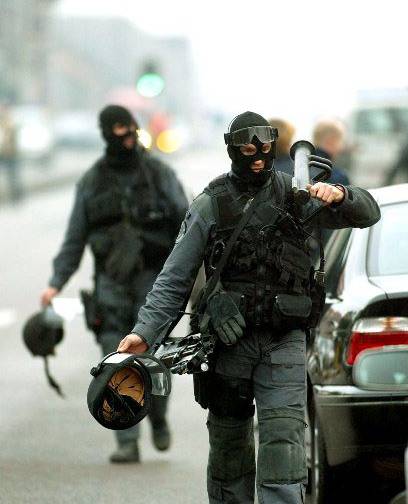 3 Uh parachute regiment
3 Uh parachute regimentThe 3 regiment is the reconnaissance unit of the para-commando brigade. It consists of a headquarters, a headquarters and service squadron and two reconnaissance squadrons.
In turn, reconnaissance squads consist of three reconnaissance platoons and an anti-tank platoon.
In the course of classic airborne operations, the Ulan-paratroopers 3 regiment may be faced with the task of ensuring the security of the territory and conducting reconnaissance.
The armament of the regiment contains various equipment and armaments: 12 ATGM Milan, 100 machine guns, 76 jeeps, 18 trucks, 14 trucks UNIMOG.
In each platoon there are seven “ILTIS” jeeps. One jeep at the platoon commander and two in each of the three sections of the platoon. Jeep reconnaissance platoons are equipped with MAG and MINIMY machine guns. In the platoon there is one sniper. In the jeeps of the anti-tank platoon, an ATGM "Milan" was installed. The closed cabin of the jeep protects the crew from small arms fire.
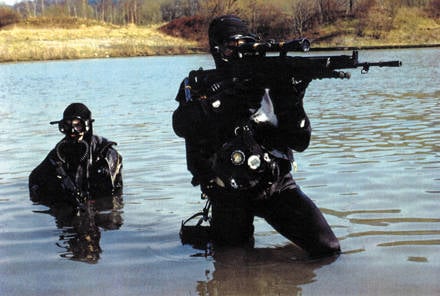
Para-Commando Field Artillery Battery
In 1972, in order to increase the firepower of the units that make up the Allied Command and the European mobile forces, Colonel Seghers proposed to form a para-commando fire artillery platoon as part of the Belgian regiment. 14 May 1973, this unit under the command of commandant Henroth was created as an experiment.
Artillery training began under the guidance of instructors of the military school field artillery. After the personnel of the new artillery unit successfully completed the combat shooting exercises, the platoon was included in the para-commando regiment as a separate unit. Subsequently, at its base, a field artillery battery was formed. Since January 1 1994, the battery consists of two fire platoons, 6 guns in each. It was then that the battery was allowed to act as a separate fire support unit, and as a paratrooper unit on foot. Since 1 January 1995, the battery has received a new name: “para-commando field artillery battery”. This unit is capable of operating according to its main purpose - to carry out artillery support tasks, but in addition, the personnel are trained to act as an ordinary paratroop unit.
The battery consists of the commander and control of the battery, as well as two fire platoons of six guns each. Since the battery must be able to operate autonomously, its staff also includes the following units: the observation and communications unit, the command center for calculating data for firing various ammunition, the ammunition section, the medical section, and the personnel counting section.
At the end of the 1997 of the year, the 12 new 105-mm GIAT towed guns came into service with the battery. Guns can be thrown through the air. The time of bringing the weapon into a combat position from the transport one is less than 60 seconds. To service the gun in a crisis situation, only three people are enough. In peacetime, the calculation of each instrument consists of five people. Baseline data for firing are calculated at the command post using a special program “Artyfire” installed on secure laptops and designed specifically for new guns GIAT. Advanced observers are armed with Laser Oldelft laser rangefinders, which allow you to determine the distance to a target remote to 10 kilometers, up to 10 meters. Observers use devices equipped with gonios and gyros, as well as modern GPS devices.
35-I para-commando air defense battery
This battery was formed on July 1 1994. In 1997, as part of the military partnership, the battery began cooperation with the 35 artillery paratrooper regiment of France, which continues to this day. As part of the partnership, French-made Mistral air defense light weapons entered the battery. Battery personnel are located in the Knesselaer in Germany. The battery is the only part of the para-commando brigade that is permanently deployed abroad.
The battery is designed to cover brigade units from air strikes and enemy air reconnaissance, cover airfield takeoffs from air strikes by brigade units and landing sites located in advanced areas of vulnerable points or objects, as well as active participation in the general air defense system.
The air defense battery organizationally consists of a commander and a company control, a fire control platoon and three air defense fire platoons, each of which includes two air defense sections consisting of three fire posts. Air defense exercises are being conducted to practice the fire missions to cover brigade units from air strikes in Crete. Field exercises are conducted either as part of a brigade or as part of a multinational division.
Para-commando skills are also constantly maintained at a high level. Personnel are constantly practicing rock climbing in the Rhine region. Intensive training for the commando program is conducted once a year for one week at the commando training center in Marsh Le Dame. Personnel performs parachute jumps monthly at the Schaffen training center.
The main armament of the battery - 18 launchers "MISTRAL". The battery also has three command centers, each equipped with a radar detection.
The MISTRAL complex is transported on light trucks. Trainings on occupying firing positions in a positional area are part of a unit.
14-I engineering company para-commando
In the 1960 year, the company is separated from the 1-th engineering battalion stationed in Westhofen (Germany) into a separate engineering company of the 4-th armored infantry brigade. 24 April 1961, the company moves to Arolsen, near the former German internal border.
In the 1991 year, in connection with the fall of the Iron Curtain and the changed policy in the field of European security, the 4-I armored infantry brigade was disbanded. In June 1992, the engineering company moved to Emblem near Antwerp to become part of the newly formed para-commando brigade. In connection with the further reorganization of the Belgian army, in May 1994, the company, together with the brigade headquarters, the medical force and the logistics support company, relocated to the modern barracks in Heverly near the city of Leuven. The main task of the company is engineering support units of the brigade and units of a multinational division.
The entire personnel of the engineering platoon is qualified as a para-commando. 14-I engineering company para-commando to perform its tasks has at its disposal a wide range of engineering equipment and technology. Each demining department has two UNIMOG trucks at its disposal. One of them is radioed and used to transport troops, while the other is an engineering vehicle equipped with a winch to transport mines and explosives.
The transport and engineering platoons have two 22-ton and six 18-ton trailers, five trucks with a crane, two VOLVO trucks, four multi-purpose tractors JCB and CASE, two mine-layer miners MATENIN, 7 inflatable ZODIAC Mk IV HD boats with two 70-strong boat motors, each of which can transport 15 fully armed fighters and one ATLAS COPCO compressor. In addition, there are six kayaks and three SILLINGER boats with 40-strong outboard motors at the disposal of combat swimmers.
210-I para-commando paratroop company
The 210 logistics logistics company was created as part of the overall restructuring of the 1 logistics units in July 1983. The newly created 210 th logistics support company became part of the 18 logistics support battalion headquartered in Lüdenside. In wartime, the 210 Company must provide logistical support to the intelligence units. The intelligence group was disbanded after the fall of the Iron Curtain, and in 1991, the 210 Company was incorporated into the para-commando brigade.
16 Medical Para Commando Company
Organizationally, the company consists of three platoons:
- headquarters platoon. It includes a headquarters section, a communications section, a supply section, a medical supply section and a service section;
- medical platoon. It consists of a command section, three paratrooped surgical teams, one descended medical-surgical team, a psychological section and a dentist section;
- evacuation platoon.
In peacetime, the medical personnel of the company (surgeons, anesthesiologists and nurses) work in a military hospital in Brussels, where it maintains and develops their professional skills and knowledge. The entire staff of the medrota receives medical education, and most soldiers perform duties in civilian hospitals (in emergency teams) in order to preserve their medical skills and knowledge.
The personnel of the brigade undergoes the necessary training in the parachute training center and in the commando training center.
The commando training center is located along the Meuse River about 6 kilometers from the city of Namur and is surrounded by steep 80-meter cliffs. The presence of mountains and rivers creates favorable conditions for the organization of special training commando. Here they practice the technique of climbing the mountain peaks, military topography, overcoming obstacles and crossing the rivers. The proximity of the wooded and hilly terrain of the Ardennes allows for tactical exercises and training raids.
The training center has two main locations in the Marsh-Le-Dame exercise area near the Arenberg castle and on the north bank of the Meuse river. The number of permanent staff of the center is about 170 people. With the arrival of the training participants, the total number of the center increases to 420 people.
After completing the training at the training centers, the candidates for the para-commando brigade join their units, where they continue their studies in the program of specialization and training in the unit. This training continues up to the level of the brigade and includes various methods: parachuting, landing in a landing way from both airplanes and helicopters. The general curriculum is designed for a three-year cycle. Some programs are repeated every year, for example, the specific teachings of the para-commando, which are held both in Belgium and abroad.
The para-command brigade works closely with the 15-m transport wing of the Belgian Air Force and has a high level of operational readiness. The team can be put into action in a very short time and therefore well suited for the formation of units of intervention. The Para-Commando Brigade is one of the Belgian formations belonging to the NATO Combined Forces, and is in constant readiness to immediately carry out the tasks of the rapid reaction forces.
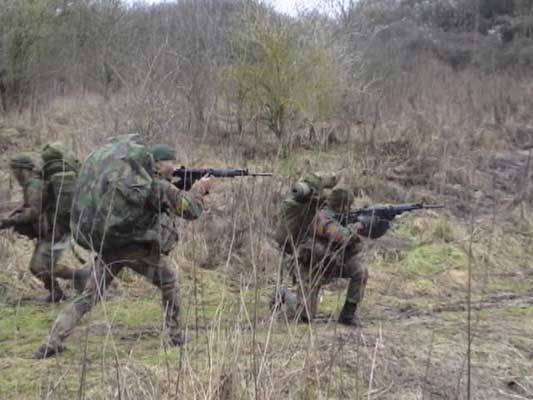
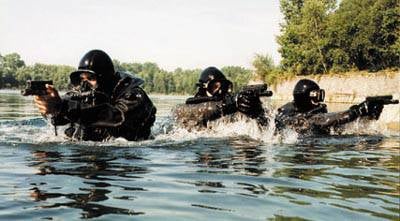
- Sergey KOZLOV Evgeny GROYSMAN
- http://www.bratishka.ru"rel =" nofollow ">http://www.bratishka.ru
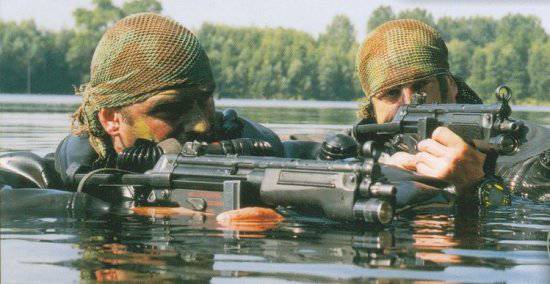
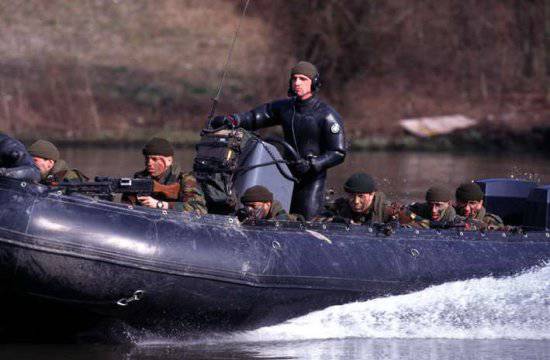
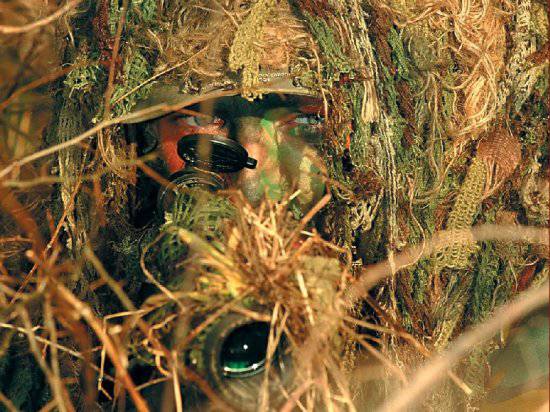
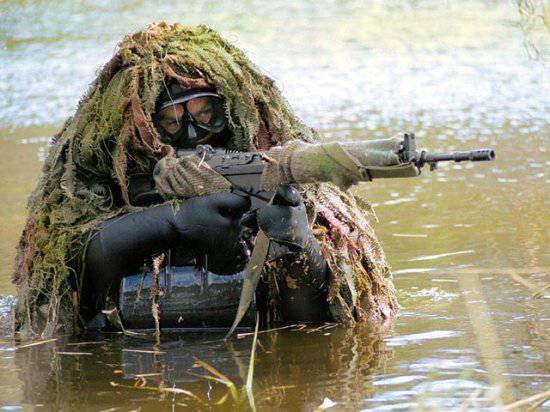
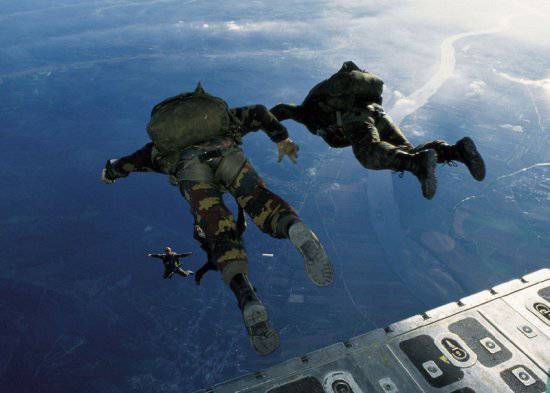
Information